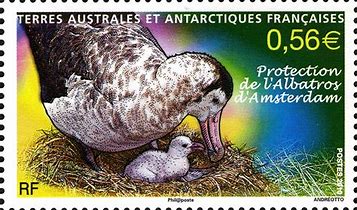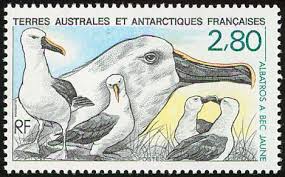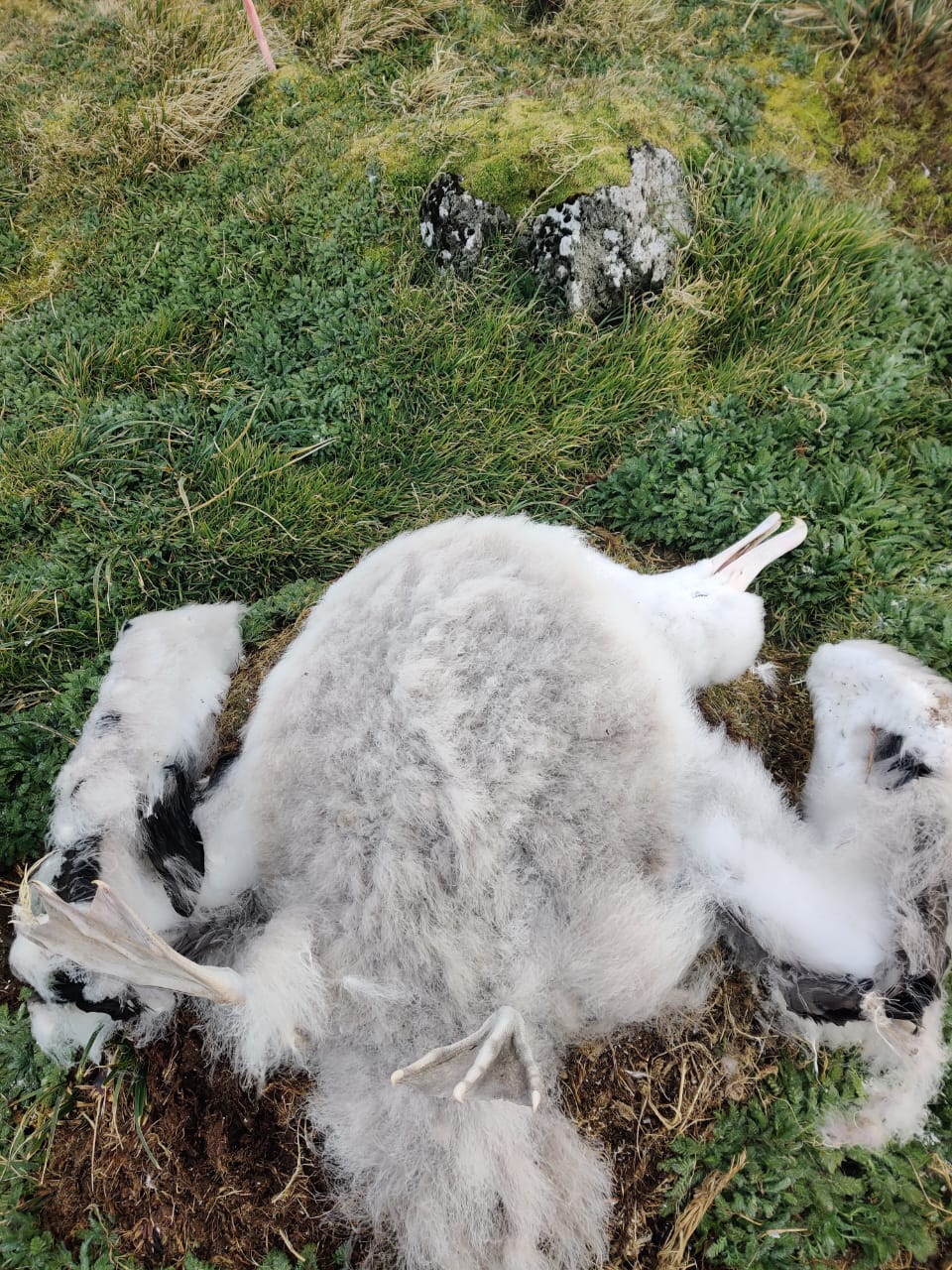 Succumbed to HPAI. Corpse of a Wandering Albatross chick in the Goney Plain long-term monitoring colony, Marion Island, November 2024, photograph by Rhiannon Gill
Succumbed to HPAI. Corpse of a Wandering Albatross chick in the Goney Plain long-term monitoring colony, Marion Island, November 2024, photograph by Rhiannon Gill
“My worst day was checking areas of Prinsloomeer and the Goney Plain monitoring colony on 20 November 2024 and coming across carcass after carcass. I counted 53 carcasses of Wandering Albatross chicks and two still alive but ill, both of which later died. I removed 18 metal bands from corpses of chicks I had banded earlier in the breeding season”- Rhiannon Gill, Marion Island Field Researcher
I feel Rhiannon's pain at finding so many dead chicks in a single day. In the late 1970s/early 1980s I, along with colleagues, set up long-term monitoring colonies for Wandering Albatrosses Diomedea exulans and Northern Giant Petrels Macronectes halli on Marion Island. Since then these study colonies have resulted in many scientific papers being published, as well as quite a few MSc and PhD degrees being awarded. As well as threats to the study birds from pelagic longline fisheries in the Southern Ocean, they are at risk from attacks by the island’s introduced House Mice. Now the birds, as well as other species on the island, face a new threat, from the High Pathogenicity Avian Influenza (HPAI) virus. In November last year came the news that the HPAI virus was suspected to be killing Wandering Albatrosses on Marion. Due to the infrequent visits by ships to the sub-Antarctic island, it has taken until last month to bring samples back to South Africa for analysis.
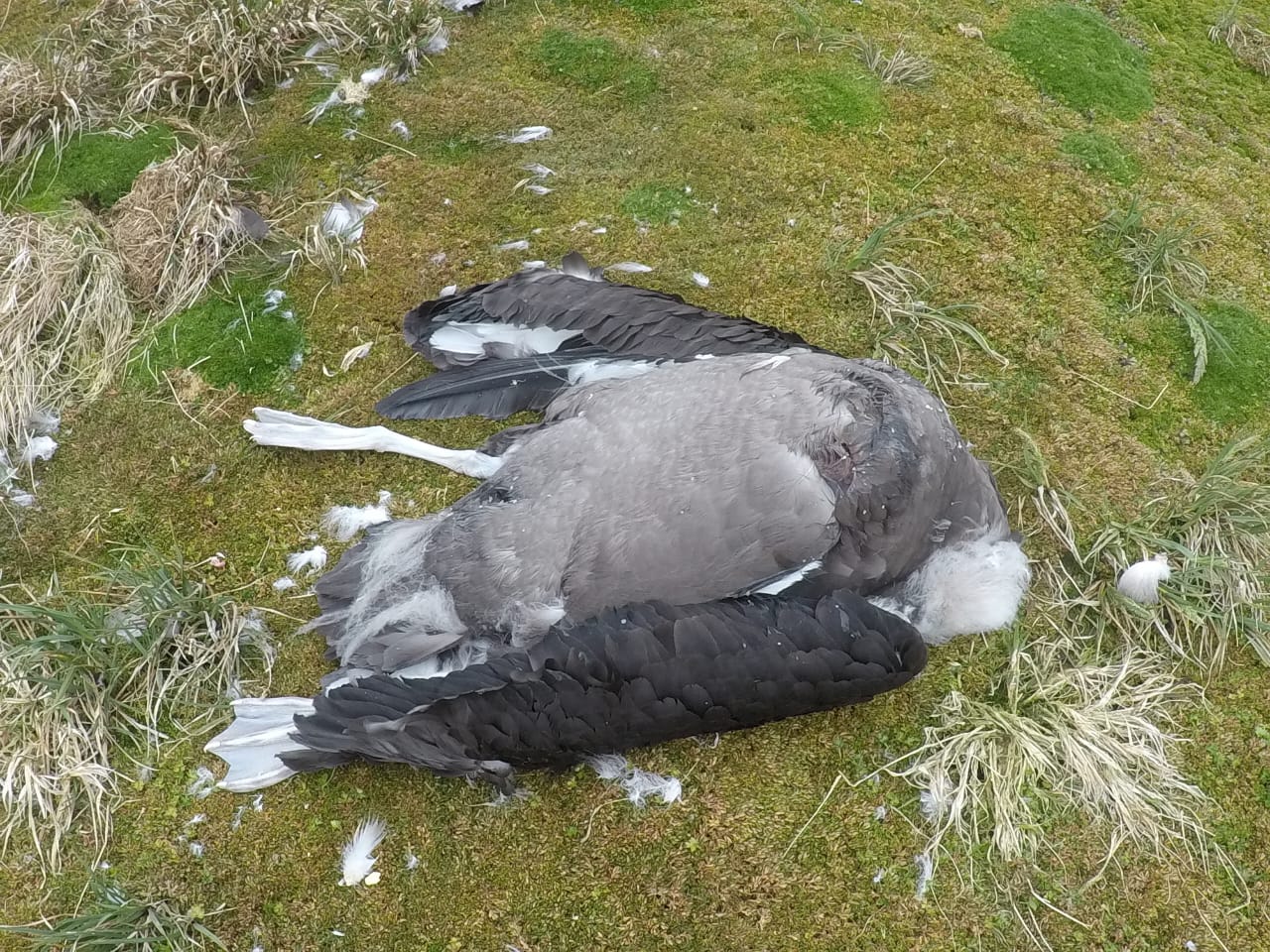
Close to fledging: another 2023/25 Wandering Albatross chick that succumbed to the HJPAI virus on Marion Island, photograph by Rhiannon Gill
The South African Department of Forestry, Fisheries and the Environment (DFFE) has now confirmed the presence of the HPAI H5N1virus on Marion Island, affecting at least six seabird species. Excerpts from the DFFE media release follow:
“The presence of high pathogenicity avian influenza (HPAI) H5N1 virus on Marion Island has been confirmed. Samples collected between September and December 2024 were all shipped back to mainland South Africa, via the S.A. Agulhas II, in February 2025. In March, Polymerase Chain Reaction (PCR) testing confirmed infection in six bird species, comprising Wandering Albatross, King Penguin Aptenodytes patagonicus, Brown (Subantarctic) Skua Stercorarius [Catharacta] antarcticus, Southern Giant Petrel Macronectes giganteus, Northern Giant Petrel and Sooty Albatross Phoebetria fusca.
Among Wandering Albatrosses, chicks were mostly affected, with at least 150 of approximately 1900 chicks from the [2024/25] cohort having died. Much smaller numbers of affected giant petrels (at least 20 Southern and four Northern) and Sooty Albatrosses (five) have been observed. The deaths of adult seabirds are of greater concern than chicks, because most species only start to breed at 3 to 10 years of age, and most affected species raise at most one chick per year.”
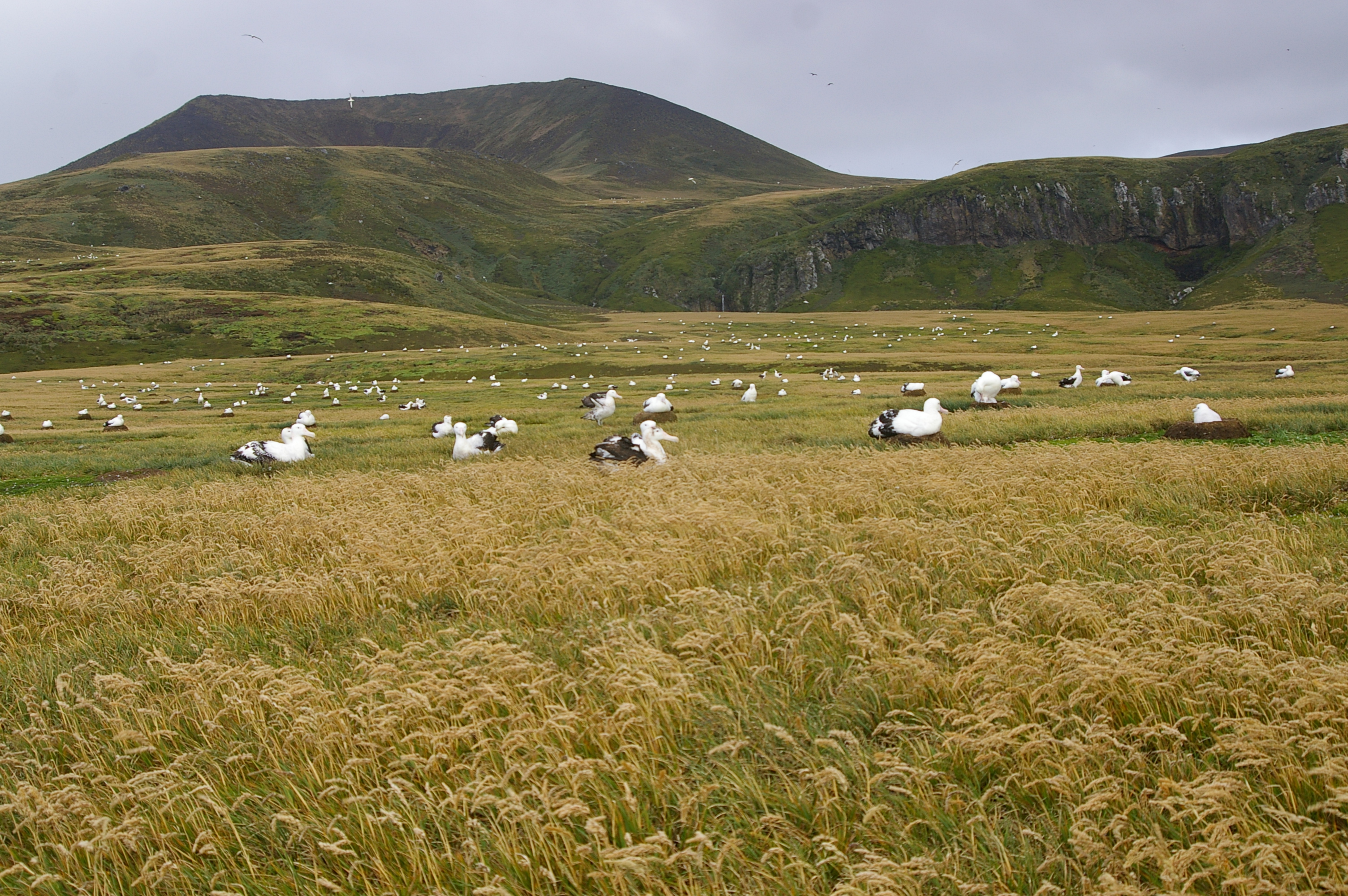
Also at risk to HPAI: Albatross Valley on Prince Edward Island with its densely breeding Wandering Albatrosses, photograph by Bruce Dyer
Visits to nearby Prince Edward Island are limited to one every four years to limit human impacts. The last survey was undertaken in November 2023, so it is unknown whether HPAI has arrived. However, it seems likely, given that banded Marion birds, including Wandering Albatrosses, giant petrels and skuas, have been seen on Prince Edward.
Having spread around much of the globe since 2021, HPAI (H5N1) has now been detected in seabirds on a number of sub-Antarctic islands, including the French Crozets, where interchanges of banded Wandering Albatrosses with both Marion and Prince Edward Islands have occurred, allowing the potential spread of the HPAI virus.
Together, South Africa’s Marion and Prince Edward Islands support approximately half the world’s population of Wandering Albatrosses. The presence of this new threat is placing the globally Vulnerable species at increased risk. At least Prince Edward Island is thankfully free of Marion’s albatross-killing mice.
Read a media article about the Marion Island HPAI announcement here. ACAP’s theme for World Albatross Day on 18 June 2025 is “Effects of Disease”
With thanks to Rhiannon Gill, Marion Island Field Researcher, South African Polar Research Infrastructure.
References:
Brown, C.R. & Oatley, T.B. 1982. Bird ringing at Marion and Pr9ince Edward Islands, 1977-1982. South African Journal of Antarctic Research 12: 45-48.
Cooper, J. & Weimerskirch, H. 2003. Exchange of Wandering Albatrosses Diomedea exulans between the Prince Edward and Crozet Islands: implications for conservation. African Journal of Marine Science 25: 519-523.
Department of Forestry, Fisheries and the Environment 2024. Protocol for the Management of High Pathogenicity Avian Influenza (HPAI) for the South African National Antarctic Programme. [Cape Town]: Department of Forestry, Fisheries and the Environment. 25 pp.
John Cooper, Emeritus Information Officer, Agreement on the Conservation of Albatrosses and Petrels. 01 April 2025
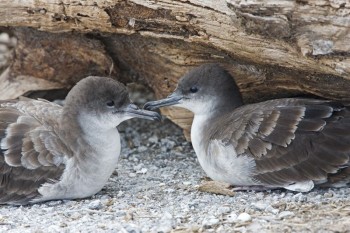 Wedge-tailed Shearwaters Ardenna pacifica breed on Raivavae
Wedge-tailed Shearwaters Ardenna pacifica breed on Raivavae
 English
English  Français
Français  Español
Español 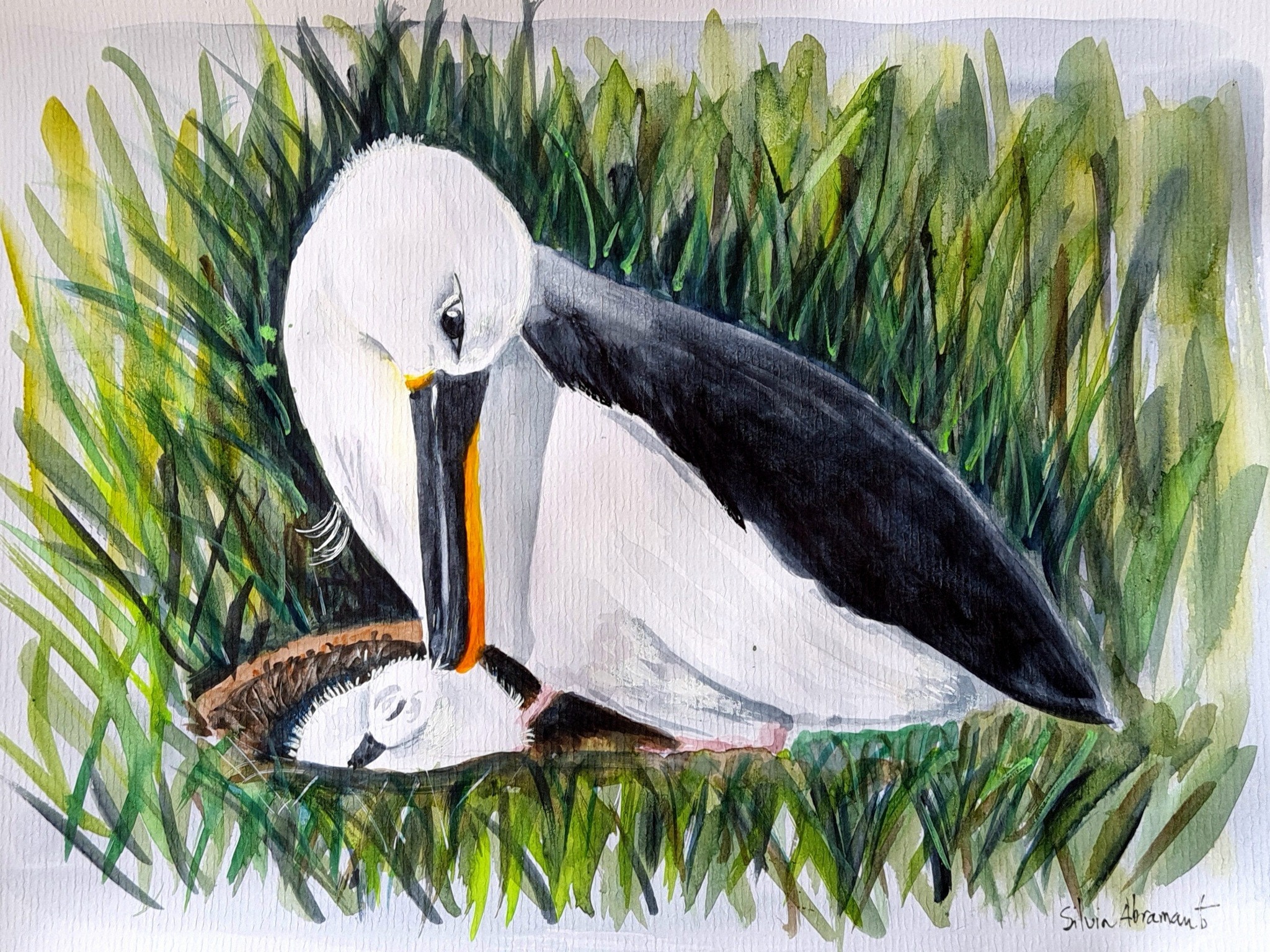

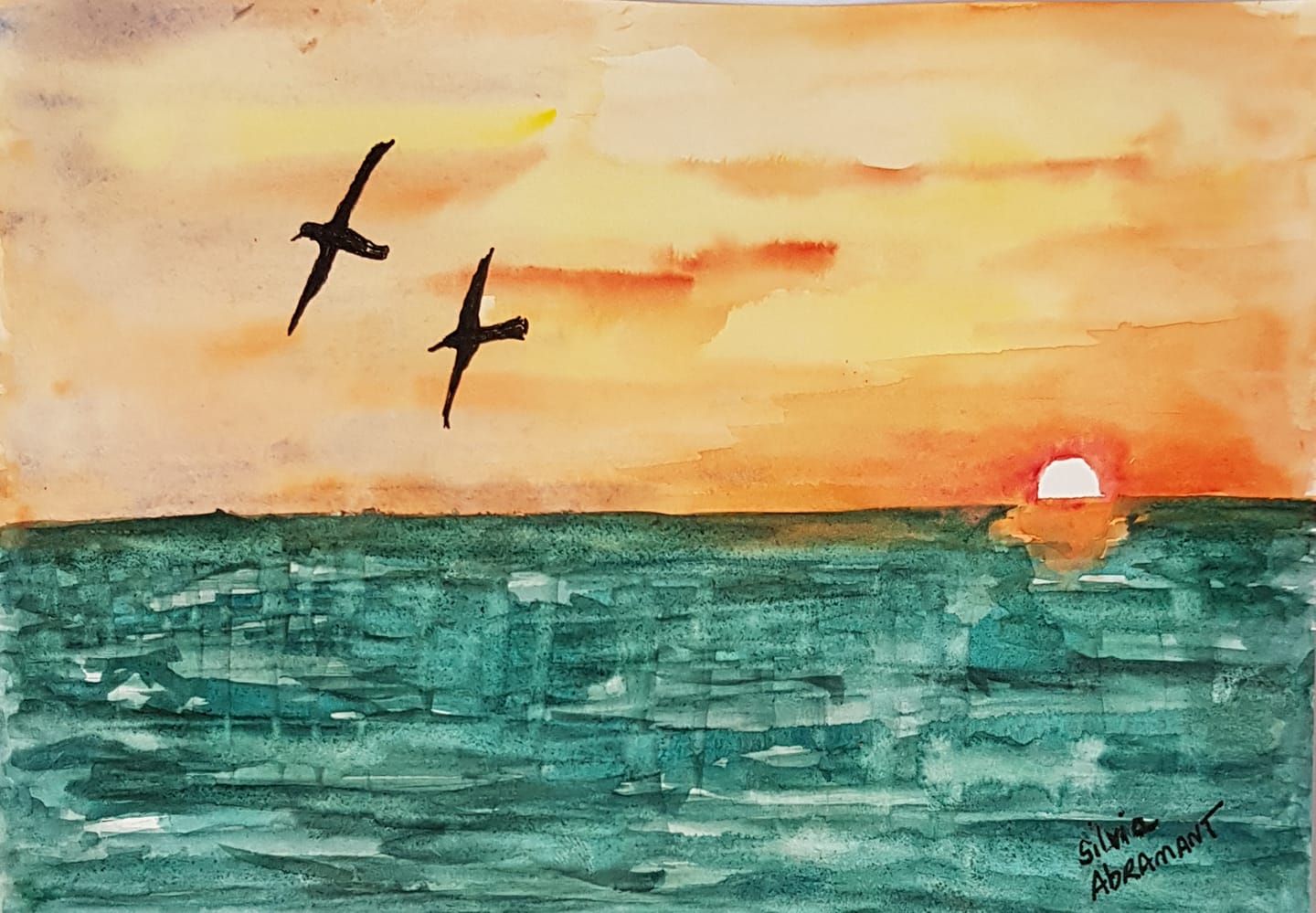
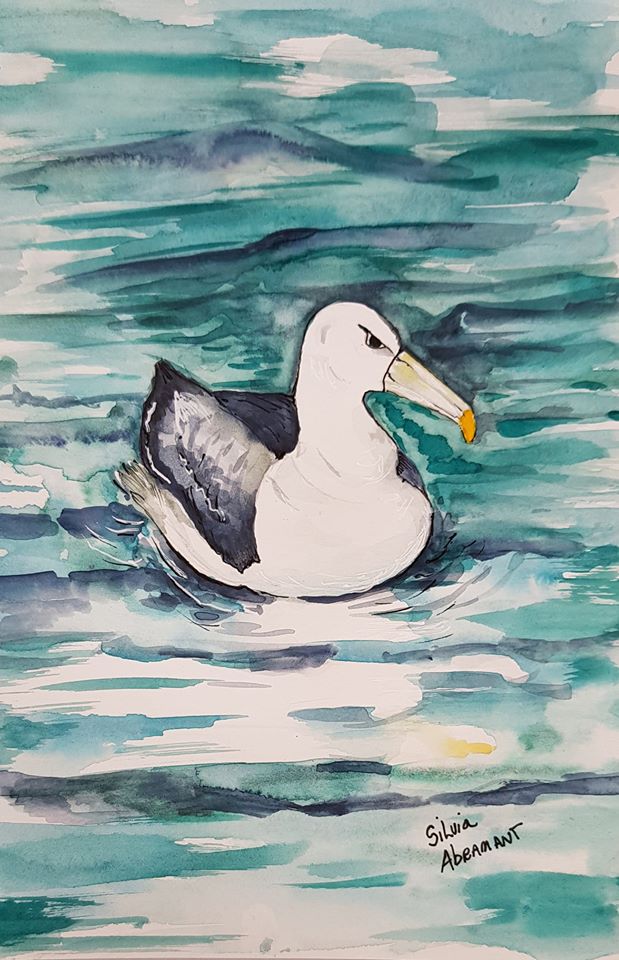
 Succumbed to HPAI. Corpse of a Wandering Albatross chick in the Goney Plain long-term monitoring colony, Marion Island, November 2024, photograph by Rhiannon Gill
Succumbed to HPAI. Corpse of a Wandering Albatross chick in the Goney Plain long-term monitoring colony, Marion Island, November 2024, photograph by Rhiannon Gill

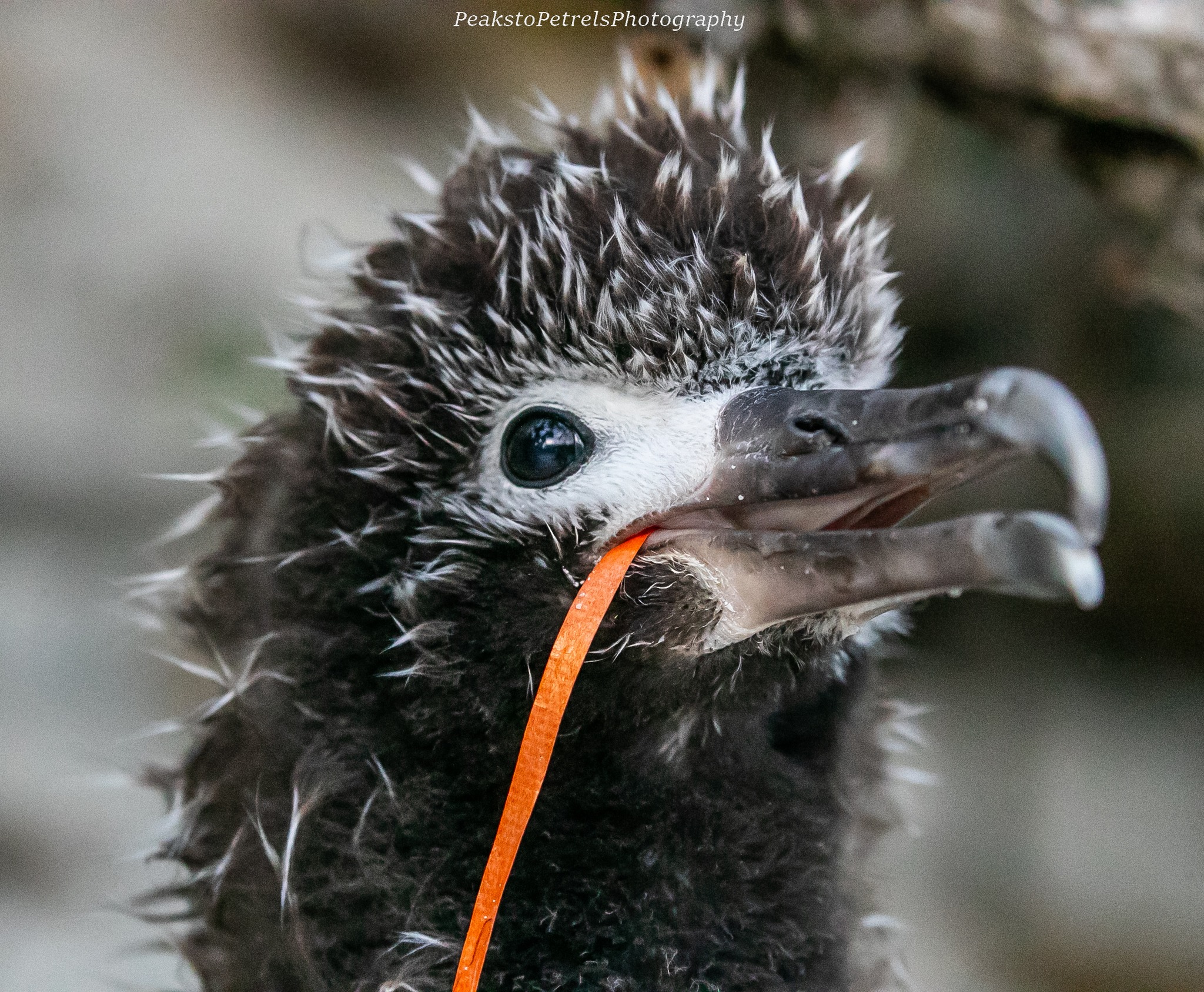 A Laysan Albatross with a protruding plastic ribbon on Kure Atoll, photograph by Isabelle Beaudoin
A Laysan Albatross with a protruding plastic ribbon on Kure Atoll, photograph by Isabelle Beaudoin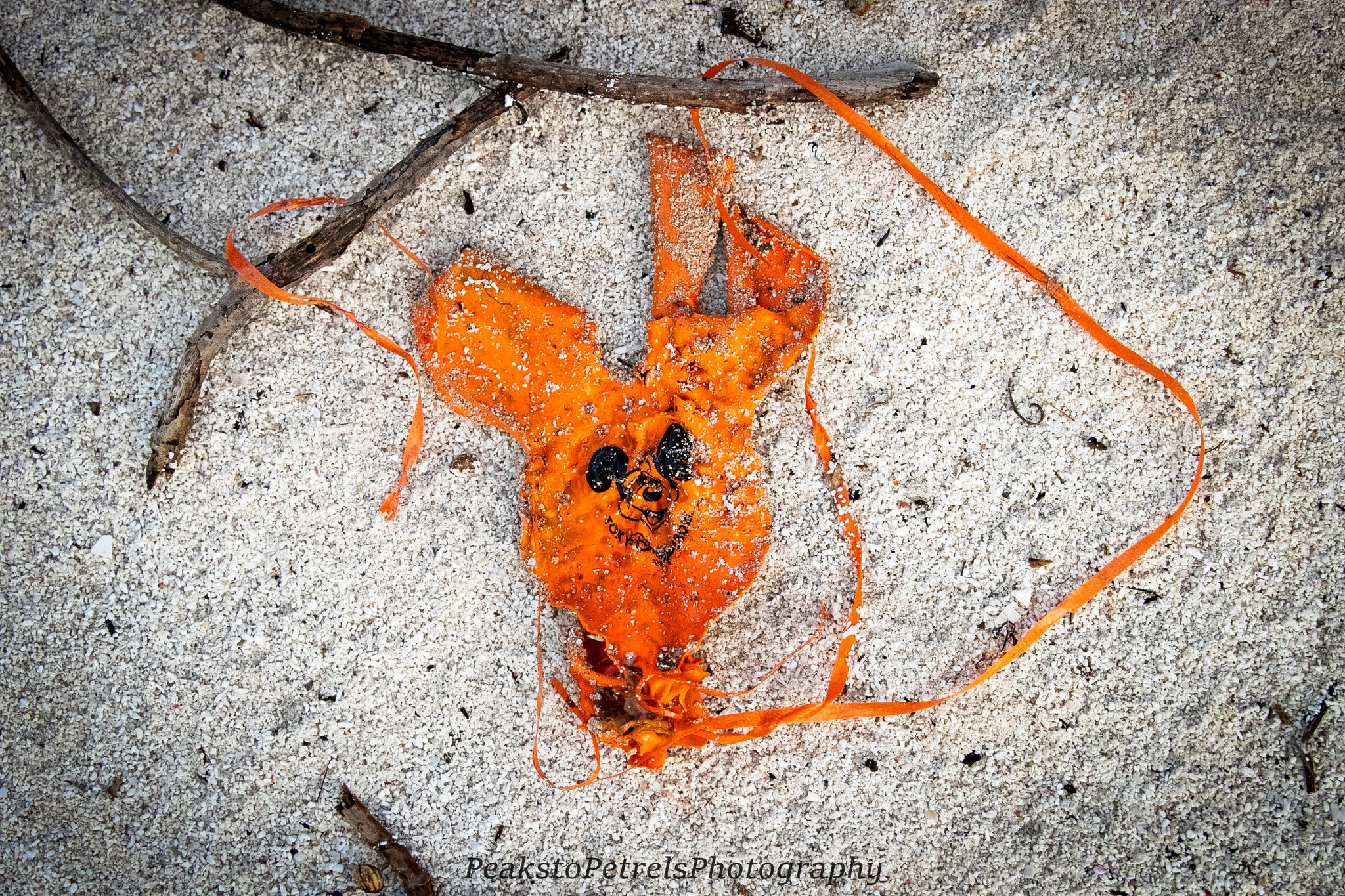
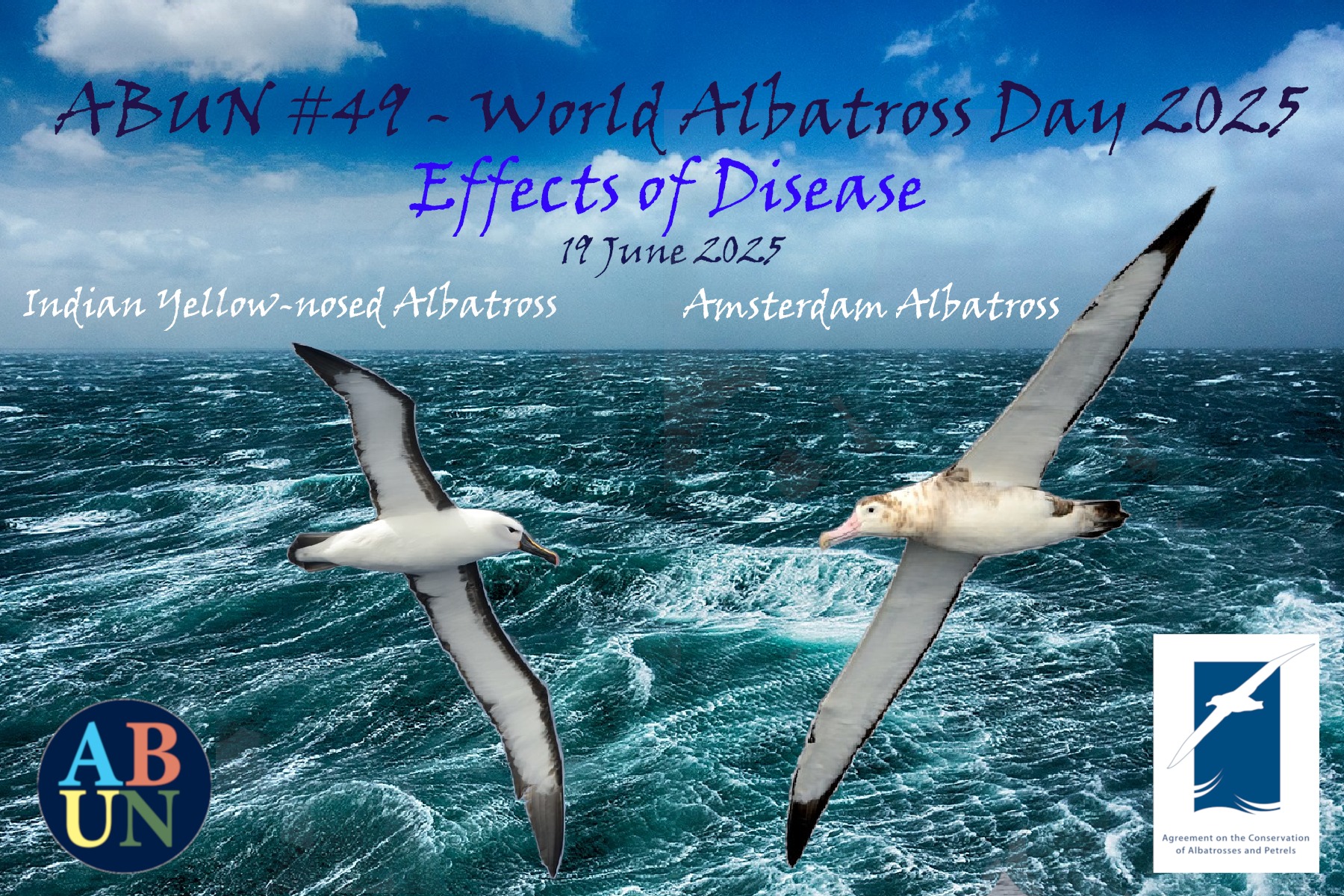 Header design by Marion Schön, after photographs by Laurie Smaglick Johnson and Kirk Zufelt
Header design by Marion Schön, after photographs by Laurie Smaglick Johnson and Kirk Zufelt